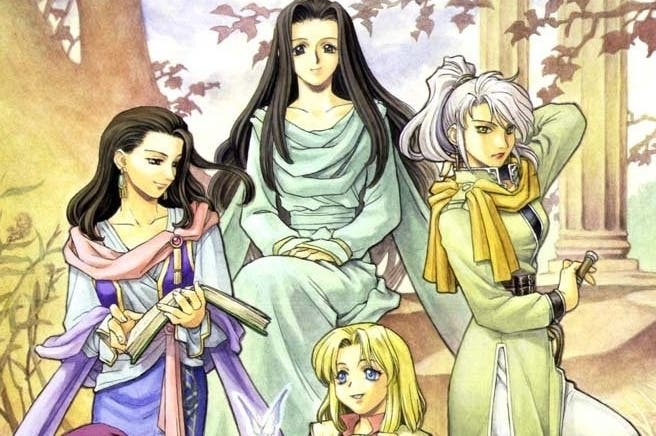Chronicles of Ys: A series retrospective
Millennium Falcom.
Book One: A brief history of Falcom
After making the precarious decision to stick with PC development during the Famicom console boom, and again during the developer death knell of the mid-2000s, when Square Enix, Sega Sammy Holdings, and Namco Bandai were born of a scramble for assimilation, Nihon Falcom Corporation's most impressive achievement is probably managing to stay in business. Like a float on a tidal wave, the company has surfed 30 years of industry turmoil by staying small, sensible, and buoyant.
Recognised as pioneers of the Japanese role-playing game, when Nihon Falcom was registered in 1981 - its name inspired by the ship that made the Kessel Run in less than twelve parsecs - it consisted only of its founder, Masayuki Kato. A computer technician smitten with the Apple 2 while working overseas in Thailand, Kato became one of Japan's first Apple distributors, opening retail store Computer Land Tachikawa under the Falcom company umbrella.
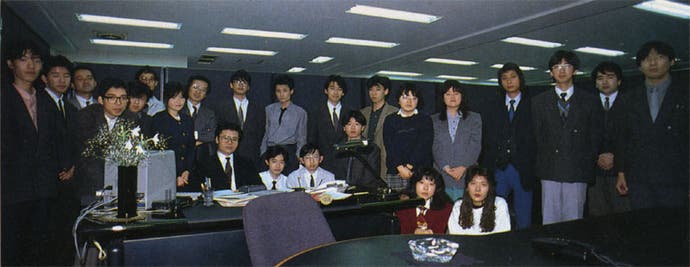
A hardcore boutique for like-minded computer buffs to hang out, drink coffee, and go full-nerd in the twilight era of bedroom programming that was the early 80s, Kato teamed up with one of the store's young patrons, Yoshio Kiya, and began experimenting with game development. They spent two years warming up with low-budget safe bets: astrology, golf, and a handful of erotic text adventures for NEC's PC-88, before finding their calling with Dragon Slayer in 1984; an action RPG before the genre had even earned a designation. The follow-up, Xanadu, remains Falcom's most successful title, selling 400,000 copies in a time when PC's were a prohibitively expensive commodity.
Falcom only briefly dabbled in Super Famicom and PC Engine development, allowing Squaresoft and Enix - both heavily influenced by Dragon Slayer - to shape the JRPG console scene. Instead, Falcom's PC titles were regularly licensed for major console platforms, and in 1989 Kato opened a dedicated Falcom store in Yoyogi, Shibuya, exclusively retailing the company's software and merchandise. Today, the space is occupied by Watami, a popular chain of Izakaya restaurants.
If you happened to be leafing through the vibrant pages of Super Play magazine during the 1990s, fawning over its mystical eastern scrapbook of cut and paste CRT screenshots, you may have caught wind of Ys.
Pronounced 'eece' and intended to be an entry-level RPG, it made its PC-88 debut in 1987 on 3.5" Floppy Disk. The brainchild of Masaya Hashimoto and heavy metal-haired designer Tomoyoshi Miyazaki, who would later found Super Famicom developer Quintet, Ys charm and typically handsome aesthetic soon earned it Falcom flagship status. Regularly celebrated in Japan but relatively unknown in the west, it's an interesting blend of action battling and uncommon characteristics. Ys I: Ancient Ys Vanished was localised in English for the Master System, while the TurboGrafx-CD version (the US name for the PC-Engine) included both Ys I & II and was released in 1989. One of the first games to utilise CD-ROM technology, it was popular enough to spawn an anime miniseries the same year.
The eponymous Ys is a floating island excised from Earth by twin deities: two beautiful nymphs synonymous with the series promotional artwork. You play as Adol Christin, a selfless red-headed adventurer with an internal compass for demon-patrolled landscapes and hapless girls, their obvious advances shunned in the name of questing. The guy even blows off Goddesses, such is his audacity.
It might sound like your average JRPG, but Ys has a discrete texture all of its own, an allure framed with attractive presentation and little in the way of filler.
The enduring cast is met with rapturous fan response whenever a cameo abounds, and the series music - handled by Falcom's in-house JDK Sound Team - is regarded as some of gaming's finest: a tradition that began when Yuzo Koshiro joined the company at just 18-years of age. His Ys I & II soundtracks, co-written with Mieko Ishikawa, were highly influential, and the PC-Engine's Red Book arrangement was considered a benchmark in quality for video game music. Post-Falcom Koshiro remained so attached to the outdated PC-88 hardware he used it to score Streets of Rage for Sega's Mega Drive.
With a nascent but diehard western following committed to fan-translating Ys titles on the Super Famicom and Windows, the series began to generate overseas interest. In 2006, Falcom revisited the console scene with Gurumin for Sony's PlayStation Portable. Deemed best fit for the company's hardcore profile, the handheld would become a Trojan horse for Ys long-awaited breach of western borders.
Book Two: A brief history of Ys
Ys countless ports, licences, and remakes play second-fiddle only to Falcom's out-of-control Dragon Slayer in terms of convolution. Thankfully Adol's adventuring, dictated in Ys lore by his journal entries, doesn't require ordered tackling outside of Ys I & II. With only a few recurring characters and locations, series continuity is more Indiana Jones than Lord of The Rings.
In an attempt to unravel the Ys tome, here follows a basic guide arranged by order of release.
Ys Book I & II - 1987-1988
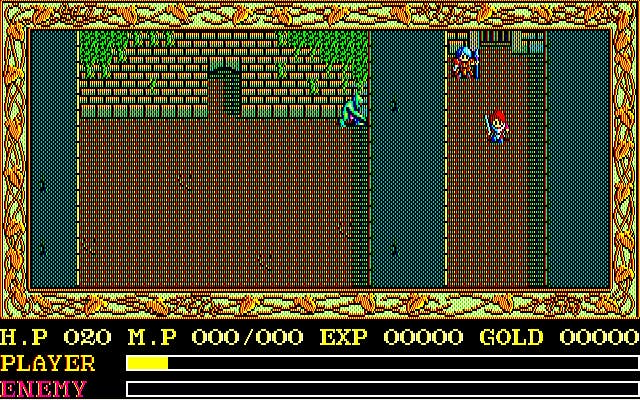
Unless you're a retro gaming extremist, Ys I & II usually come joined at the hip, which is sensible since they were originally designed as a single game. Featuring an addictive 'bump system', where Adol combats enemies by ramming them off-centre or at devastating diagonals, Book I's enjoyable six-hour teaser culminates with the first appearance of Darm Tower, a cloud-scraping summit of series iconography. Book II's fleshed out continuation improves with taut maze layouts, trinkets, magical projectiles, demonic transformations, and an exceptional set of boss battles.
Ebay's drink-spitting prices for the TurboGrafx release - still the best of the old-school offerings - have been made less coarse by the game's availability on Wii Virtual Console. That said, while great fun, Ys I & II are harder work in their original formats. Adol has no run and is restricted to four-way movement, making combat and dungeon navigation occasionally vexing; elements rectified in Falcom's stunning 2001 Windows remake, Ys I & II Complete. Overhauled with graphics to melt weary eyes, it was eventually brought to the PSP as Ys I & II Chronicles with exclusive new character portraits and three generations worth of soundtrack.
Ys III: Wanderers from Ys - 1989
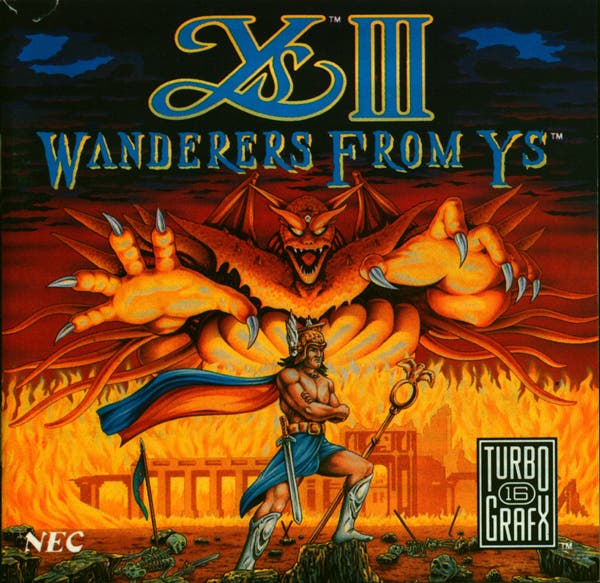
After rumoured discontent over Falcom's persistent sequels, Ys III was the last entry from programmer Masaya Hashimoto and designer Tomoyoshi Miyazaki before leaving to form Quintet, taking audio king Yuzo Koshiro with them. Their games, Actraiser, Illusion of Gaia and Terranigma, to name a few, continued the theme of action-based adventuring.
Switching to a Zelda 2-style platform perspective and ditching the maze-like dungeons, Ys III is a certifiable black sheep. If you liked Popful Mail - a Falcom title that got a Mega CD localisation courtesy of Working Designs - you can probably click with its unusual format as long as you don't mind a steep difficulty curve.
Within months of Taito's PlayStation 2 update in 2006, Ys III by this point having appeared on eleven platforms and a mobile phone, Falcom finally settled all confusion with their own remake, Ys: The Oath in Felghana. This completely re-engineered version is now considered the final word on Ys III, and one we'll come back to a little later.
Ys IV - 1993
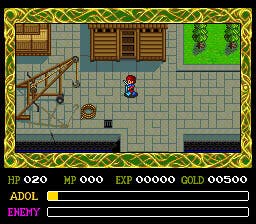
Notepad ready?
1993 heralded two very different Ys IV games, and neither by Falcom. Ys IV: Mask of the Sun was published on the Super Famicom by Tonkin House, while Ys IV: Dawn of Ys was released by Hudson Soft on the PC-Engine - the latter superior with cleaner controls, better presentation, and tighter combat.
Chronologically, Ys IV takes place just prior to Ys III, revisiting Esteria and various key characters from the first two games, before Adol departs for the land of Celceta. Twelve years later, Taito continued their Ys PlayStation 2 remakes with yet another version of Ys IV, this time developed by Guilty Gear's Arc System Works. Thankfully, Falcom has issued another full stop with their remake for PlayStation Vita, Ys: Memories of Celceta.
Ys V: Kefin, The Lost City of Sand - 1995
Falcom retook the reigns in 1995, releasing Ys V exclusively for the Super Famicom. Pretty, but suffering from generic RPG syndrome, it swaps the series traditional super-deformed sprites and sunny nature for a somewhat formulaic surrogate. In 2006, Taito, still on their PlayStation 2 remake crusade, released Ys V: Lost Kefin, The Kingdom of Sand - arguably the better version unless you bathe in 2D graphics and gargle pixels.
Ys VI: The Ark of Napishtim - 2003
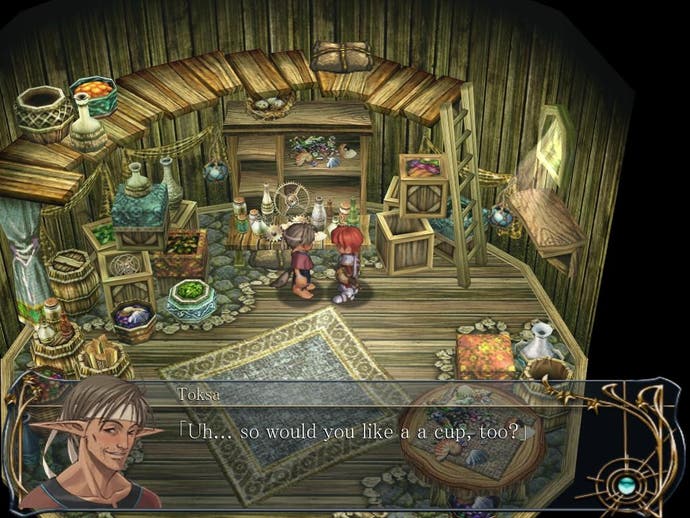
After an eight-year hiatus, Falcom published Ys VI for Windows, rekindling the series upbeat action roots by strapping Adol with magical pyrotechnics and exciting weaponry. Rendered in isometric 3D, it's gorgeous both visually and aurally, and universally accepted as a stunning return to form.
Unfortunately the console versions don't stack up. Konami's PlayStation 2 port swaps out the appealing character sprites for ungainly polygonal models, and the PSP release is fettered with a loss in graphical fidelity, screen cropping, and frame rate issues. It's Windows all the way here, and someone else thought so too, releasing a fan-translation patch so the game can be enjoyed in all its glory.
Ys: The Oath in Felghana - 2005

Oath in Felghana is Falcom's bid to shut out the white noise of Ys III's endless variations. Transitioning from one of the series weakest to one of its best, the 2D side-scrolling perspective has been dashed in favour of a graphical rebuild in-line with the series modern profile.
Available for Windows, PSP and PSN, it follows Adol and Dogi (a prison-breaker from Ys I) to Dogi's hometown of Redmont, where wicked Count McGuire is intent on resurrecting something monstrous. In contrast to Konami's Ys VI PSP port, Falcom's handling is expert, featuring artwork galleries, adjustable difficulty, and a triple soundtrack treat with a glowing new arrangement.
So heavily action-oriented it often feels like an arcade game with RPG overtones, Felghana's furious combat packs in combos, power-ups, magic attacks, and a knockout anthology of challenging boss battles. If, like me, you have a gag reflex for English dubbing, just visit the options screen and turn it off before starting a new game.
This was the second of XSEED's Ys localisations, skirting a grey area by purchasing Jeff Nussbaum's fan-translated script. Unresolved online controversy ensued after the programmer who facilitated Jeff's PC translation in 2005 felt he had a stake in the work's realisation.
Ys Origin - 2006
A 700-year prequel to the first Ys, featuring up to three all-new playable characters, Origin uses the Felghana engine and takes place entirely in Darm Tower. Solid combat, worthy boss encounters, and the ability to play as Dark Fact's ancestor (the Ys I villain) sadly doesn't make up for Origin being comparatively short and lacking in inspiration. Available for Windows, it's also currently on Steam, fully translated.
Ys Seven - 2009

Falcom's considerable success with the PSP resulted in Ys Seven being developed exclusively for the platform, now also available for PS Vita owners via PSN. Adol and stalwart companion Dogi sail into Altago City port, and in order of priority attempt to save a harassed girl, and then the world. Flourishing with another stellar soundtrack, smart new graphics engine, and well-defined polygonal character models, Ys Seven is a broader, thirty-hour adventure with a complex plotline and a larger cast of characters. In a tenacious fan-service push, Dogi also becomes playable for the first time. With a party of three engaging enemies in real-time battles, combat is now more technical, with a split-second counter that boosts your burst meter and assigned special attacks.
Ys: Memories of Celceta - 2012 (Japan) 2013-2014 (US/EU
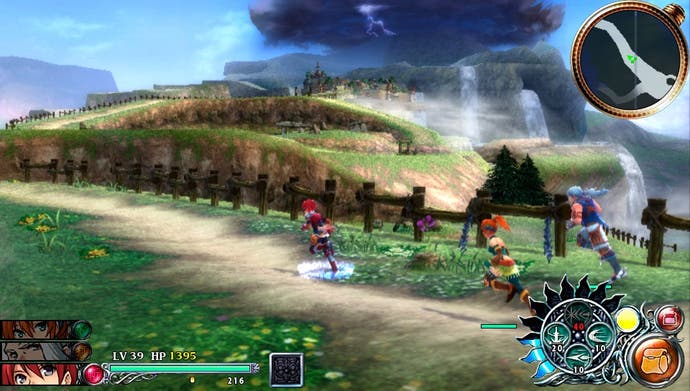
At the beginning of Ys II, Adol is tasked with finding a Celceta flower in the underground mine to cure Lilia of an affliction. Amnesia stricken, Adol now finds himself in the land of its origin, in this, the latest Ys title for PlayStation Vita.
A remake of Ys IV - the only game in the series not originally developed by Falcom - Celceta is now the official canon entry. Taking advantage of the Vita's power by adding so much in the way of new characters, expanded plotlines, and visual refurbishment, it's difficult to consider it a remake at all. Weighing in at almost forty hours, it also builds on Ys Seven's battle system to tout the most refined combat of the series so far.
Released in the US by XSEED, it arrives in Europe next month on behalf of Nippon Ichi America. Representing real positive momentum for Falcom, a company that's come a long way since 1981, Celceta is proof that if a passion is strong enough, it will find a way to endure.
Epilogue
With Adol Christin already demonstrating the Link effect by way of heroic muteness, Ys' system of obtaining special items to overcome dungeons and unlock doors often sees it likened to Nintendo's Legend of Zelda.
But Ys is very much its own thing. Energetic, stripped-back, and with claim to some original processes, it remains unsaddled with today's RPG clobber of cosplay cut-outs and gaudy soap opera theatrics. Levelling-up, navigating dungeons, and abundant anime artwork are hardly uncommon RPG themes, yet there's still an indistinct but undeniable something that makes the series feel special.
Falcom's touch being different to that of Square-Enix, Ys continues to maintain the PC-88 spirit of uncluttered videogame adventuring. With a dash of colour, a pinch of charm, and that all-important arcade spritz, the series dogmatic nature interestingly mirrors Falcom's own resolute attitude to business.
And why not. When you invent something, you're under no obligation to change it.
To accompany this retrospective, we've a rare and exclusive interview with Nihon Falcom published this morning.
